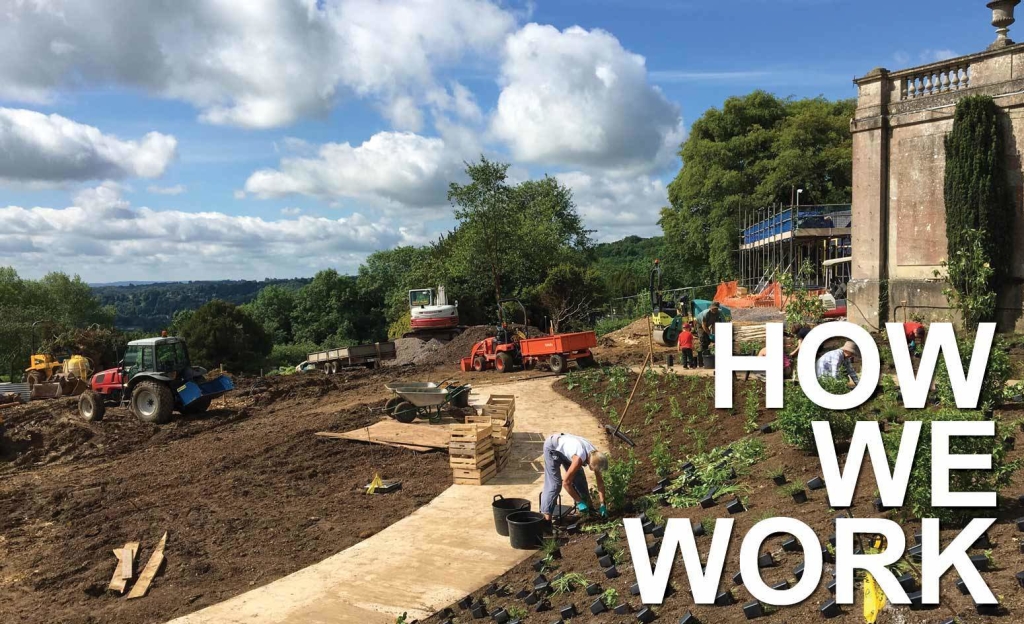HOW
WE
WORK – PATHWAYS
Paved surfaces define a garden’s structure and organization.
They provide a basic foundation on which secondary elements are arranged. The paved areas are the hardest working parts of the garden; by defining the areas of use, they also set the framework for the planting. Given their importance, it is wise to design paved surfaces first.
Paving should be based on a few principles. Keep in mind that paving – whether it is for a path, terrace, or driveway – is fundamentally a utilitarian feature. Each paved surface should be designed for a specific purpose. Walkways should lead users comfortably, safely, and as conveniently as possible from place to place.
Choose materials, colors, and textures should be carefully selected. Texture and pattern can affect the perception of scale. Finer textures make tight spaces appear larger.
Practical aspects are also a consideration. Light colored pavements are reflective and tend to be cooler on hot, sunny days. Hard and uneven surfaces are less comfortable for activities such as dancing, while smooth tile finishes can be troublesome as they become slippery when wet.

